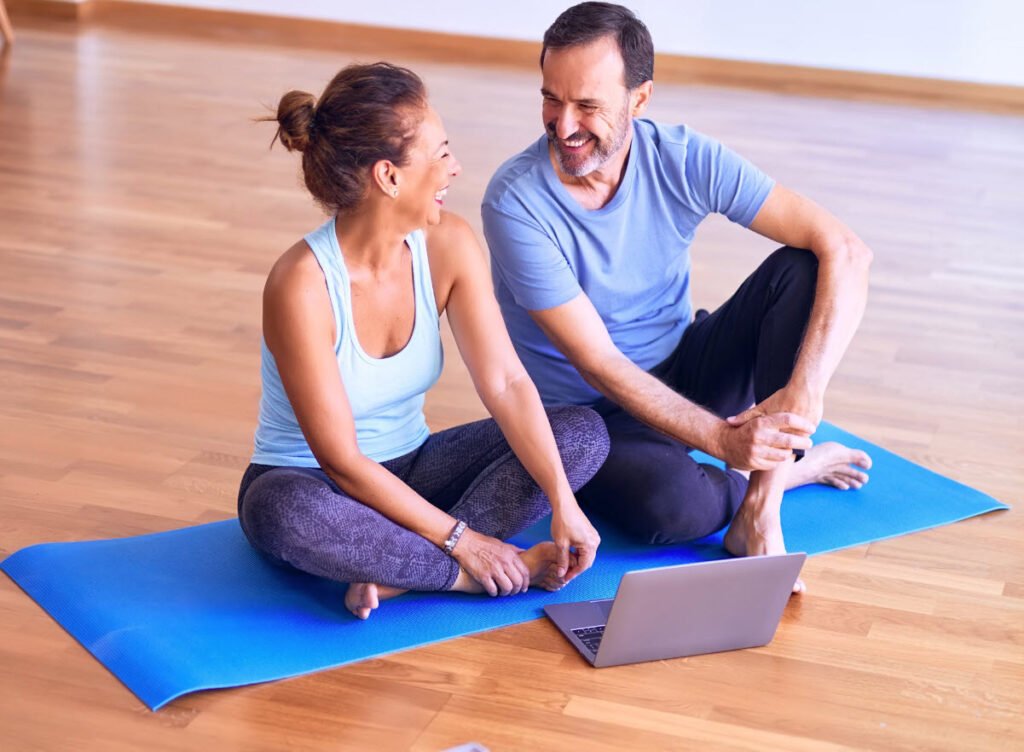In the modern world, convenience is key, and having a home gym offers a fantastic way to stay in shape without ever leaving your house. However, working out on your own comes with its own set of challenges. While home gyms are a great investment in health and fitness, they won’t be effective—or safe—unless you know how to use the equipment properly. Incorrect usage can result in inefficient workouts, lack of progress, or worse, injuries.
Here’s how to ensure that you’re using your home gym in the best way possible.
1. Start With a Warm-Up and Stretches
Warming up before a workout is a critical step that you should never skip. Warm-ups are essential to prepare your muscles, increase blood flow, and reduce the risk of injury. A dynamic warm-up involving light cardio, like jogging in place, jumping jacks, or using a stationary bike for five to ten minutes, will elevate your heart rate and get your muscles ready.
Once your body is warmed up, it’s time to stretch. Stretches are vital for flexibility and injury prevention, especially when transitioning into strength training. Some essential stretches include:
- Hamstring stretch: Sit on the floor with one leg extended and reach towards your toes. Hold for 15 seconds, and repeat for the other leg.
- Side bends: Stand with your feet shoulder-width apart and slowly bend sideways to each side, feeling the stretch along your torso.
- Quadriceps stretch: Stand on one leg, pulling the opposite foot towards your glutes to stretch the front of your thighs.
When stretching, it’s helpful to exhale as you move into the stretch and inhale as you release it. Performing two to three sets of each stretch will increase your flexibility and prepare your body for a more effective workout.
2. Using Weights Safely
Strength training is one of the primary benefits of owning a home gym. Whether you’re using free weights, a multi-gym machine, or resistance bands, lifting weights offers an excellent way to build muscle, burn fat, and improve bone density. However, it’s crucial to use them properly to avoid injury.
One of the most common mistakes people make is starting with weights that are too heavy. Even if you feel confident, always begin with a lighter set of weights than you think you can handle. For example, if you believe you can lift 30 pounds, try starting with 15 pounds and gradually increase the weight as your strength improves.
This will not only help you master your form but also protect you from muscle strains, tears, and sprains.
When lifting, it’s important to use controlled, deliberate movements. Jerking or rushing through exercises can lead to poor form and injuries. Avoid locking your joints—such as fully extending your knees or elbows—when lifting weights. Always keep a slight bend to reduce stress on your joints and prevent hyperextension.
Stay mindful of where your body parts are at all times. It’s easy to accidentally place a finger, hand, or foot in the wrong position, which can lead to injuries like pinching or crushing. When using machines, ensure your hands are placed correctly on the handles, and your body is properly aligned before initiating the movement.
3. Maintain Proper Form and Posture
One of the most overlooked aspects of exercising at home is maintaining proper form. Without a personal trainer to guide you, it’s easy to develop bad habits. Poor form not only reduces the effectiveness of your workout but also increases the risk of injury.
When using any machine or free weights, make sure your back is straight and not rounded. If you’re performing exercises like squats, deadlifts, or overhead presses, engage your core and ensure that your spine is neutral. Rounding or arching your back during these movements can place undue stress on your lower back, leading to injury.
Your head and neck should always be aligned with your torso to maintain proper posture. For example, when performing exercises that involve pulling or pushing, such as lat pulldowns or chest presses, make sure to look forward rather than down or up. This helps in keeping your spine in a neutral position and reduces strain on your neck and back.
A mirror can be an excellent tool in your home gym for checking your form. Observing yourself while performing exercises can help you make real-time corrections, ensuring that you’re using the right technique.
4. Incorporate Variety in Your Workouts
Repetition of the same exercises over time can lead to stagnation in your fitness progress. For your body to continue improving, it’s essential to mix up your routines and incorporate different types of exercises. A well-rounded home gym workout should include:
- Strength training: Using dumbbells, kettlebells, resistance bands, or machines to target different muscle groups.
- Cardiovascular exercises: You can use equipment like a treadmill, elliptical machine, or stationary bike, or even perform high-intensity interval training (HIIT) routines using your bodyweight.
- Flexibility and mobility exercises: Incorporate stretching or yoga to maintain flexibility, improve range of motion, and help your muscles recover.
By varying your workouts, you’ll engage different muscle groups, prevent boredom, and continue to challenge your body.
5. Rest and Recovery
Recovery is just as important as the exercise itself. Without proper rest, your muscles won’t have the opportunity to repair and grow. Make sure to incorporate rest days into your weekly routine to allow your body to recover from the strain of exercise. This also helps to prevent overtraining, which can lead to burnout or injury.
Your body will often give you signals when it needs rest. If you’re feeling unusually fatigued, sore, or mentally drained, take a break. Overexertion can lead to injuries that could sideline you for weeks or even months.
Consider incorporating recovery tools such as foam rollers, massage guns, or even yoga to help alleviate soreness and promote blood flow to the muscles. After each workout, perform a cool-down routine, including light stretching, to gradually reduce your heart rate and help prevent muscle stiffness.
6. Consult Online Resources
While working out at home provides flexibility, it also means that you won’t have a trainer nearby to give you immediate feedback. Fortunately, there are numerous resources available online that provide workout tutorials, form checks, and equipment reviews. Websites, fitness apps, and YouTube channels offer detailed instructions and demonstrations that can help you use your home gym equipment effectively and safely.
Many fitness enthusiasts participate in online communities or forums where they share advice, answer questions, and provide support. Engaging with these communities can give you access to valuable insights and the motivation to stay consistent with your workouts.
Conclusion
Home gyms are a convenient and effective way to exercise, but it’s essential to approach your workouts with the right techniques to maximize their benefits. Start with a warm-up and stretching routine, use weights appropriately, focus on maintaining proper form, and vary your workouts to keep challenging your body.
Remember to listen to your body and prioritize recovery to prevent overtraining. With proper care and attention, your home gym will be an invaluable tool in reaching your fitness goals.



